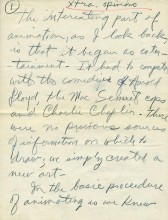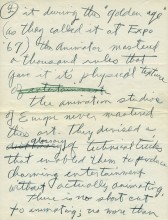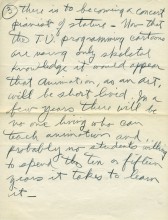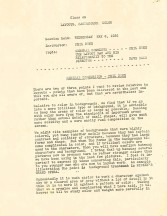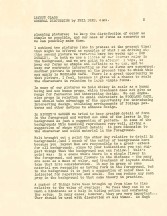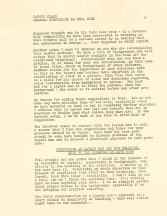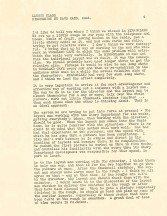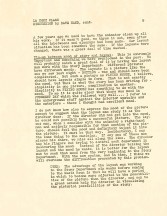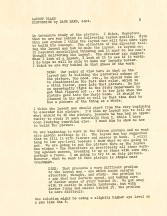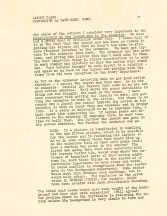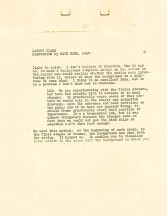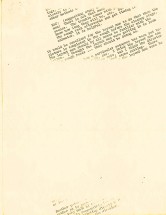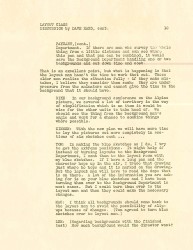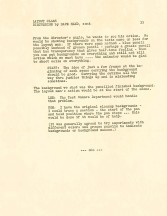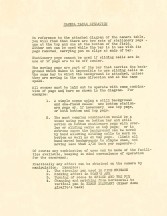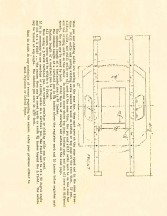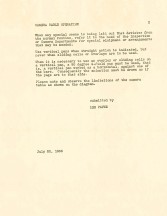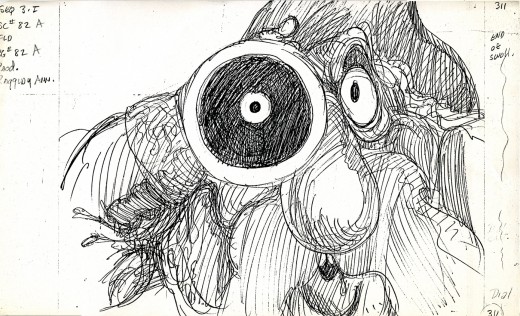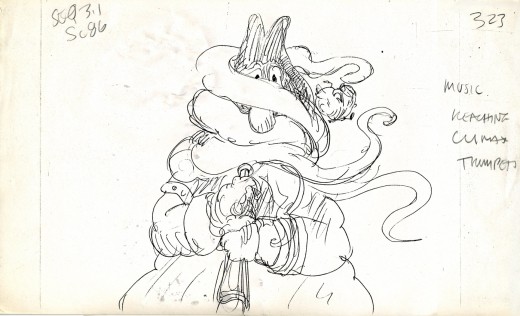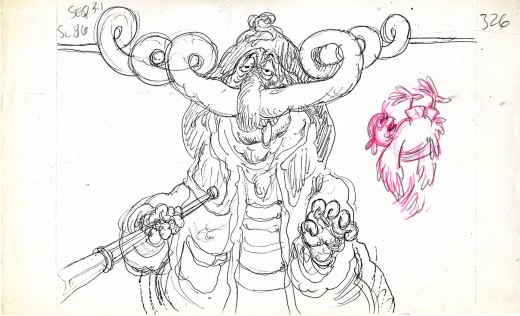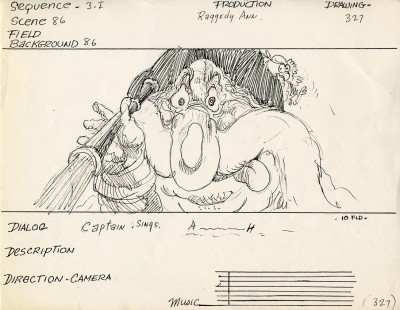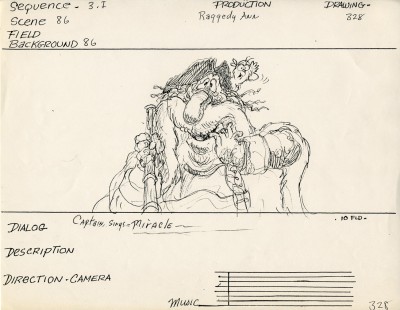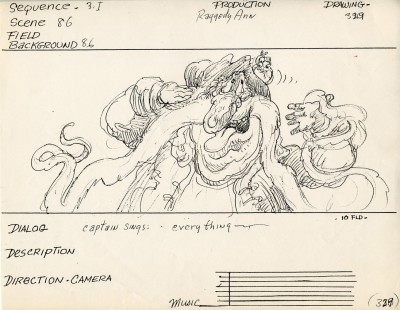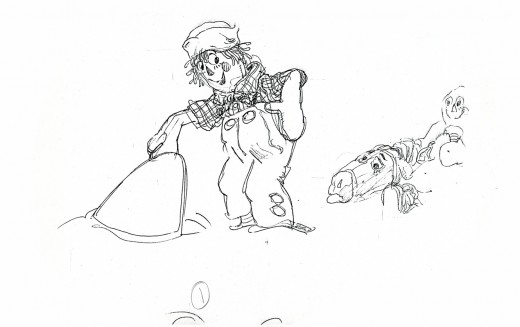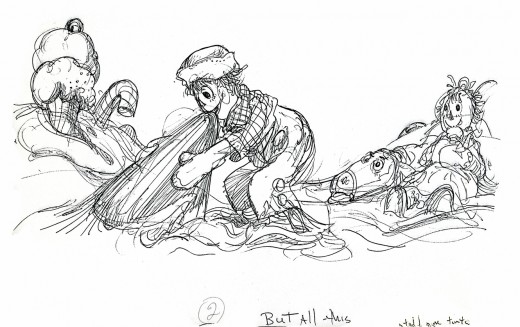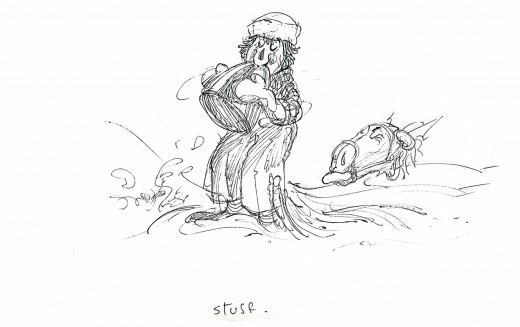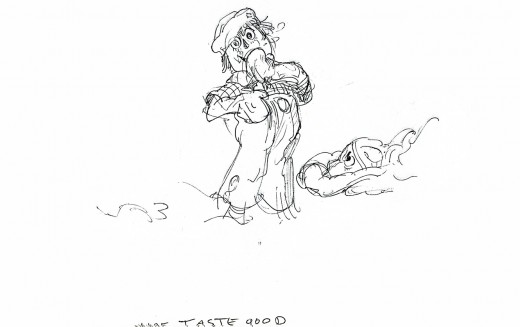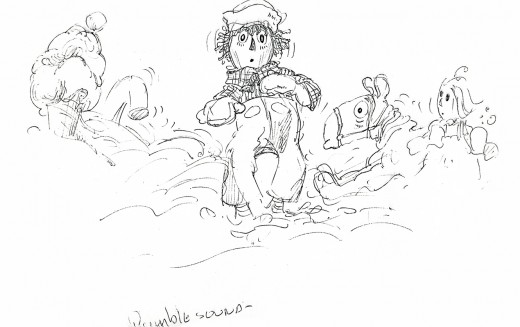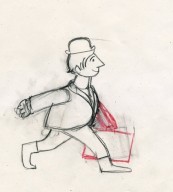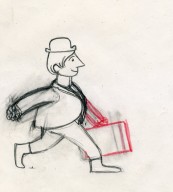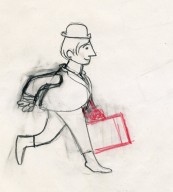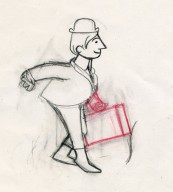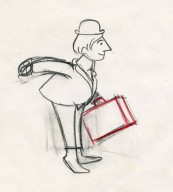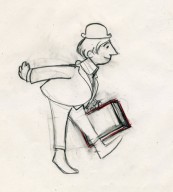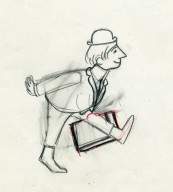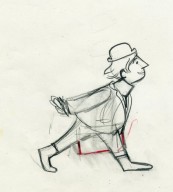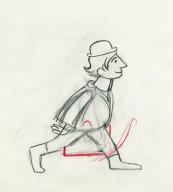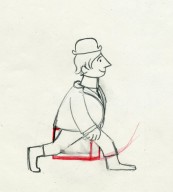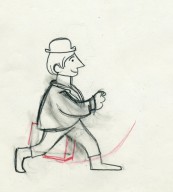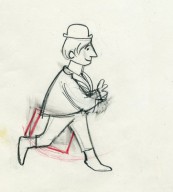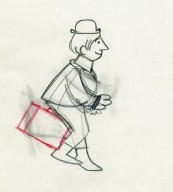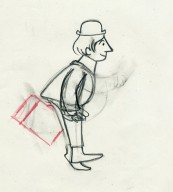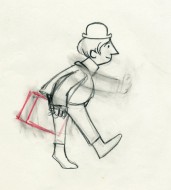Category ArchiveAnimation Artifacts
Animation Artifacts &Daily post 03 Nov 2006 08:52 am
Norstein & TCM features
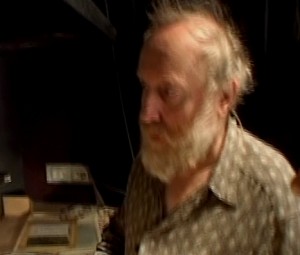 – For those who haven’t seen the Yuri Norstein segment from Winter Days, it has been posted by Daniel Thomas MacInnes at Conversations on Ghibli. Give yourself the two minutes to watch it.
– For those who haven’t seen the Yuri Norstein segment from Winter Days, it has been posted by Daniel Thomas MacInnes at Conversations on Ghibli. Give yourself the two minutes to watch it.
The piece, in a slightly longer version, is on YouTube as well.
There’s a small clip of this work on the Norstein dvd, but watch it in its entirety.
Daniel also posts several other beautiful segments from this amazing film by Kotabe & Okuyama and Takahata here.
- Turner Classic Movies is about to show a couple of animated features on their jam packed schedule for November.
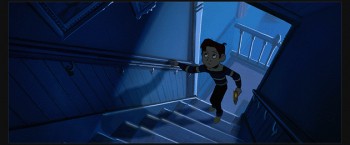 On November 12 at 8:30, they’re screening Brad Bird‘s feature, The Iron Giant. It’ll be nice to see a version of this without endless commercials on television. (Though the DVD release is excellent.)
On November 12 at 8:30, they’re screening Brad Bird‘s feature, The Iron Giant. It’ll be nice to see a version of this without endless commercials on television. (Though the DVD release is excellent.)
On November 12 at 10:00 pm, they’re showing Grave of the Fireflies. For information about this film, I, once again, suggest you go to Conversations on Ghibli.
On November 12 at midnight, Lotte Reineger‘s The Adventures of Prince Achmed will screen. This is the first animated feature, a silent film made in 1927, and if you haven’t seen it at least once, watch it, tivo it or tape it.
Look out for November 12th.
- TCM also continues with the Cartoon Alley series on Saturdays:
Nov 4th at 11:30 AM: Features three Tex Avery George and Junior Cartoons:
Henpecked Hoboes (1946), Hound Hunters (1947) and Half-Pint Pygmy (1948).
Nov 11th at 11:30 AM: Features three WB Bugs Bunny Cartoons:
A Wild Hare (1940), Elmer’s Pet Rabbit (1941) and Hiawatha’s Rabbit Hunt (1941).
Nov 18th at 11:30 AM:: Features three MGM Spike Cartoons:
Counterfeit Cat (1949), Ventriloquist Cat (1950) and Garden Gopher (1950).
(This is repeated Tuesday Nov. 21st at 6AM.)
Nov 25th at 11:30 AM: Features three WB Bugs Bunny/Cecil Turtle Cartoons:
Tortoise Beats Hare (1941), Tortoise Wins By a Hare (1943) and Rabbit Transit (1947).
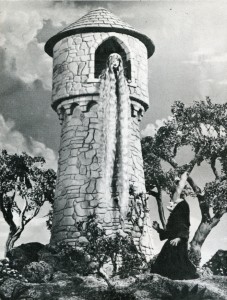 – On Nov 24th, the day after Thanksgiving, Ray Harryhausen is featured. TCM is going to air a number of his fantasy features.
– On Nov 24th, the day after Thanksgiving, Ray Harryhausen is featured. TCM is going to air a number of his fantasy features.
8:00 PM 7th Voyage Of Sinbad, The (1958)
10:00 PM Jason And The Argonauts (1963)
12:00 AM Mysterious Island (1961)
However, the real treat will be the shorts sandwiched in between these features. Harryhausen did a number of fairy tale films that are rarely seen and will certainly be the highlight for the night.
This will be a television premiere that seems to be going unnoticed. Again, get out your Tivos (or in my case tape.)
These can be seen at:
9:45 PM RAPUNZEL (1951)
1:45 AM KING MIDAS (1953)
Flushed Away has opened today. With it there are the reviews. In NYC you get strikingly contrasting views. The NYTimes’ A.O. Scott gives it a glowing review (“…it strikes me as unlikely that any British action picture released this year will surpass “Flushed Away.â€). The NYDaily News’ Jack Matthews is so-so over it. 2½ stars.
I hope Dreamworks makes a bundle and realizes they’ve lost future work with Aardman, an honest and respectable animation studio working with dignity in a world of muck.
Animation Artifacts 25 Oct 2006 07:45 am
Art Lectures
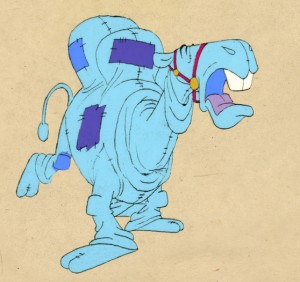 – At the beginning stages of production on Raggedy Ann & Andy, Art Babbitt was brought in to conduct a week’s worth of classes for the small (at the time) staff (and anyone else in the NY animation industry who wanted to attend).
– At the beginning stages of production on Raggedy Ann & Andy, Art Babbitt was brought in to conduct a week’s worth of classes for the small (at the time) staff (and anyone else in the NY animation industry who wanted to attend).
He basically taught principles of inbetweening. This is much the same material he taught at Dick’s studio in Soho Square. About 50 people attended and we all kept our own notes. There were also Dick’s lecture notes from the London classes. These were handed out, behind the scenes, to anyone who wanted them.
Dick and Art also wrote a joint article for Sight & Sound in the Spring 1974 issue. In it, Art analyzes the character of Goofy, and Dick analyzes the character of Art. That article follows:
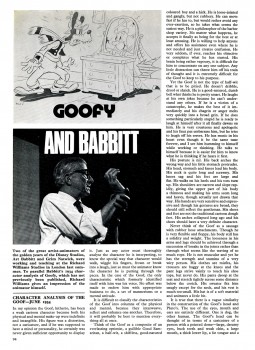 1
1 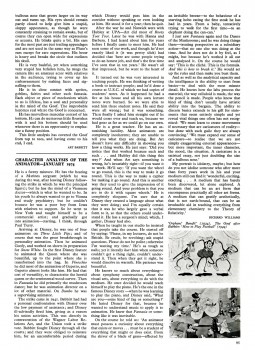 2
2
(Click on any image to enlarge.)
Animation Artifacts 24 Oct 2006 07:33 am
Imagination Machines
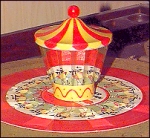 – Yesterday, I noticed on-line a toy that I had as a kid. It was a praxinoscope that was designed to play on your phonograph. You placed a record on the turntable (called a hi-fi back then) and over the spindle went this mirrored object. As the childrens record played, you watched the animation play out in the mirrors.
– Yesterday, I noticed on-line a toy that I had as a kid. It was a praxinoscope that was designed to play on your phonograph. You placed a record on the turntable (called a hi-fi back then) and over the spindle went this mirrored object. As the childrens record played, you watched the animation play out in the mirrors.
Of course, I made my own animations, too. They didn’t work as fluently, but they gave an indication of what was possible.
Somehow, back then, all our toys seemed more designed to develop and exploit our imaginations.
As a matter of fact, that goes for movies too. These days everything is told to us, nothing is designed to use our imaginations. Take a look at Flags Of Our Fathers. Every simple idea in that film is driven home a dozen times. The message at the end of the film is told us by a VoiceOver narrator. There’s nothing left for us to think about. Animated films are the same; any substance is on the surface.
Where are the terror of Snow White, or the desperation in Pinocchio, or the tears of Dumbo in modern animation?
Open Season, Over The Hedge, Cars, The Ant Bully, Monster House, Hoodwinked. Do any of them leave anything to the imagination for the children in any of us? (The only animated film I remember from this year that left anything for me to expand on was A Scanner Darkly with the veil of invisibility the characters wore.) The last 2D film that gave me something more was The Iron Giant. That’s a long time.
Don’t get me wrong; it’s not just an animation thing. It’s a sign of our times where every move by a child is plotted out in some video game. Everything is black and white. There’s the Axis of Evil, the Good Guys, and the French. There don’t seem to be any shades of gray anymore.
Animation Artifacts 23 Oct 2006 08:02 am
Grim Article
- For my amusement, I’m posting an article written by Grim Natwick for the November 1969 issue of Cartoonist Profiles. Following the article, I’m posting the original typescript & handwritten finish by Grim. The manuscript is a carbon copy, the handwritten done in pencil.
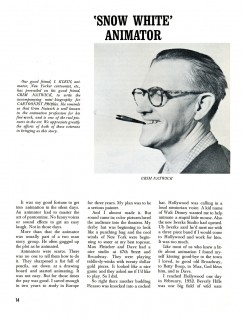 1
1 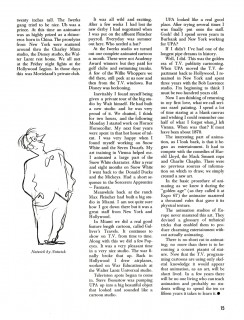 2
2
(Click on any image to enlarge to a legible size.)
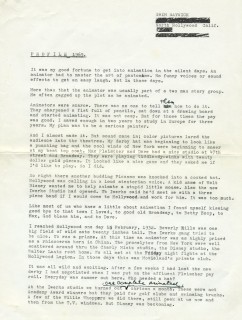 1
1 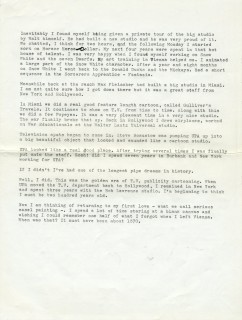 2
2
(Note: I’ve crossed out Grim’s address & phone number)
Action Analysis &Animation Artifacts 20 Oct 2006 09:30 am
Phil Dike LO Lecture
- As I noted yesterday, - Hans Perk on his site, A Film LA, has posted the Ken Andersen LayOut Training Course from the Disney studio Nov, 1936. I’ve posted two of these – Part I and Part III.
I have a fourth lecture that Phil Dike gave on May, 1936; it was called a “General Discussion”. Unfortunately, two of its pages were copied off kilter, so more than half of pgs. 8 & 9 are missing. Since there’s still good information in there, I’ve decided to post it anyway. I’ve had to clean it up a bit to make a couple of pages legible.It follows:
Animation Artifacts 17 Oct 2006 12:22 pm
Iwerks’ work
- From my earliest days, as soon as I’d learned who he was, I was a fan of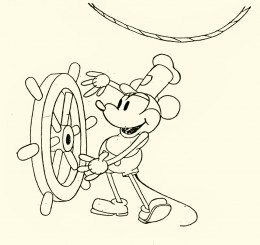 Ub Iwerks.
Ub Iwerks.
I began to wonder if it was just the publicity and myth of Iwerks which had followed with him all these years. We read about all those 1930′s East coast animators moving to the West, not to work for Disney but to seek out Iwerks – it was well known that he was the “true artist” behind those Disney shorts.
With Bob Thomas’ 1958 book, The Art of Animation, I read, for the first time, about Iwerks and his importance. Only recently did I begin to wonder how responsible Iwerks actually was to Disney’s success. Was this just that myth being carried over the years? Or was he brilliant?
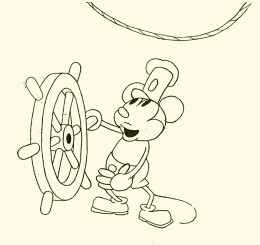 A quick look at the animation done at the time and we see some basics not yet developed.
A quick look at the animation done at the time and we see some basics not yet developed.
There weren’t many stories written before Disney, so animators divided up their pictures. For example: They’d decide to do a film where Mutt & Jeff would go to Hawaii. One animator would start on the beach and end with them on surfboards. The animator would make it up as he went along until he turned out the required footage – maybe 2 minutes of work. The next animator would pick up Mutt & Jeff on surfboards and take them to being washed up on the beach, etc.
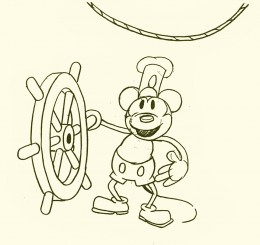 Obviously, the lead animator doled out rudimentary plot points, but a lot was left to the individual animator. Look at the book, Walt In Wonderland by Russell Merritt & J.B. Kaufman to see how Disney started developing stories during this period.
Obviously, the lead animator doled out rudimentary plot points, but a lot was left to the individual animator. Look at the book, Walt In Wonderland by Russell Merritt & J.B. Kaufman to see how Disney started developing stories during this period.
The same was true for animation techniques and methods. Animation burst out of its seams with the creation of Mickey Mouse. Disney had initiated a lot of ground work, but the medium really started growing with the enormous success of Steamboat Willie. Iwerks led the way, not only by the amount of work he did but the quality.
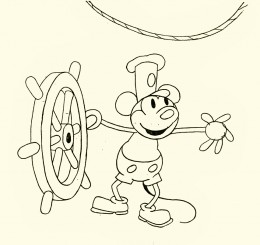 Take a look at these five Iwerks drawings from that short.
Take a look at these five Iwerks drawings from that short.
One of the first lessons an inbetweener learns is that a face turn shouldn’t have a direct middle in it. The middle drawing (#3 here) shouldn’t be straight on; it should favor, slightly, one side or the other.
Despite the simple drawings of Mickey, Ub Iwerks seemed to understand this instinctively. He didn’t really get lessons from anyone. As a matter of fact, he was creating the rules. This comes close to being straight on, but the mouth gives it away. The face is facing screen left.
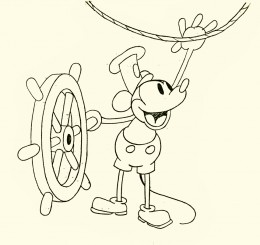 Another simple inbetween lesson is to offset the inbetween (usually an animator or good assistant will set this up for the inbetweener.)
Another simple inbetween lesson is to offset the inbetween (usually an animator or good assistant will set this up for the inbetweener.)
Here Mickey is standing upright on #1 and he’s upright on #5. Drawing #3 has him with knees bent, beating in tempo to the sound. Even though this is from the first sound cartoon, done in 1928, the offset rule is in effect.
I think it’s pretty clear that some sophistication has entered the animation that Iwerks was drawing. This same sophistication isn’t in other animator’s work.
(Click any image to enlarge.)
Add to this the fact that Iwerks was probably the fastest producing animator, and you probably have good reason for knowing he was the genius behind Disney.
This, of course, didn’t remain that way. After Iwerks left, leaving behind enough animators trained by him, their work developed exponentially. Better artists were entering the studio and bringing their talents to the work, and they started making a serious attempt to improve the work.
Iwerks stopped animating and stopped trying to improve the character animation. Instead, he tried to improve the camera – actually developing the mulitplane camera in his own studio. Animation, under Iwerks, didn’t develop.
The book by John Kenworthy, The Hand Behind The Mouse, gives some solid information that wasn’t previously published and puts a lot of material into perspective. Someday we’ll get another voice on this great subject with more critical insight.
Animation Artifacts 14 Oct 2006 08:23 am
More Corny
- My recent posting of art from Raggedy Ann & Andy prompted John Celestri to send me this clipping from the Cincinnati Enquirer re the kidnapping of Ann & Andy.
- Here are some more of Corny Cole‘s story board drawings from Raggedy Ann & Andy.
This first Layout marks the introduction of Raggedy Andy. He’s under the box. This drawing gives you a good idea of the detail Corny put into every drawing.
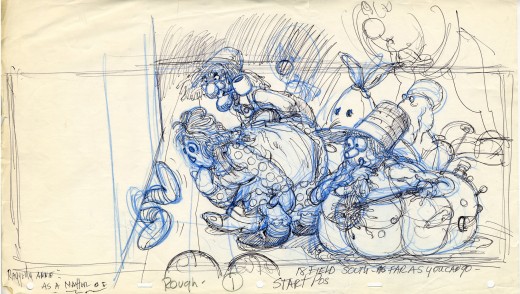
(Click on any image to enlarge.)
The following images come from the first shots of the Pirate Captain. He espys the new doll, Babette, and falls madly in love.
The first four stills are 8.5×14 copies of the storyboard; the remainder come from the director’s workbook. They’re all sequential.
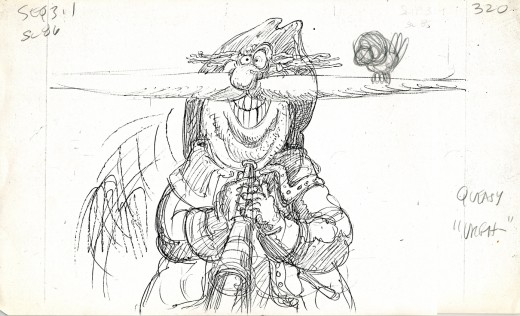
I think the parrot, which was added in pencil, is the work of Asst. Director, Cosmo Anzilotti. The bird just shows up later, so Cosmo probably tried to give him some business.
It’s here that the Pirate goes into his song (everybody sings in this film) and concocts his plot to kidnap the French doll.
Animation &Animation Artifacts &Richard Williams 12 Oct 2006 07:54 am
Andy & Corny
- Seeing the models David Nethery posted on his site, You’re A Gazelle, in his comments on Tissa David‘s work from Raggedy Ann, started me thinking about the Dick Williams‘ film. As I noted, yesterday, I have quite a bit of artwork from the film, and I thought I should post some.
I think in ways, the unsung hero of Raggedy Ann was Corny Cole. He was there from day one working with Dick and Tissa – once the one minute pilot had gotten the job for Dick. Corny was brought in as the key designer, and Gerry Potterton came on as Dick’s Associate Director.
I was hired soon thereafter, even though I had no idea what I’d be doing. For the first couple of weeks, while they were recording, I just moved furniture and read the script and whiled away the time by drawing Johnny Gruelle‘s characters.
I helped Dick and Gerry add spot coloring to the storyboard as the animatic was being shot. We spent a long Saturday coloring like mad with colored pencils. We worked on the last section of the animatic to be shot. I’d say 90% of the board was done by Corny. Dick and Gerry added spot drawings as needed, while we built the animatic.
Corny then did lots and lots and lots of drawings to give to animators.
Some of those drawings are posted herein for a scene at the beginning of the “taffy pit” sequence. These drawings were also used in the animatic.
After Corny finished feeding the animators, he started animating, himself. He took on a sequence that filled the screen with a pirate ship full of dolls floating around some rough waters. The large sheets of paper were filled with Corny’s black bic pen lines. Doug Compton eventually worked with Corny to finish this overworked sequence.
Animation Artifacts &Hubley &Tissa David &walk cycle 10 Oct 2006 07:55 am
Upkeep Cycles
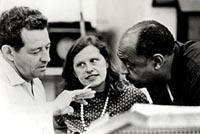 – Back in 1973, the Hubleys produced Upkeep, a short film for IBM. It chronicled the history of the service repairman in a light hearted way. Actually an industrial, it was treated like a personal film. (There’s a thin line between some of their industrials and their personal films.) Of Men and Demons was done for IBM though they considered it a personal film; it instructed in the positive aspects of the binary code and was nominated for an Oscar.
– Back in 1973, the Hubleys produced Upkeep, a short film for IBM. It chronicled the history of the service repairman in a light hearted way. Actually an industrial, it was treated like a personal film. (There’s a thin line between some of their industrials and their personal films.) Of Men and Demons was done for IBM though they considered it a personal film; it instructed in the positive aspects of the binary code and was nominated for an Oscar.
(John & Faith Hubley with
composer, Benny Carter)
Tissa David did the lion’s share of the animation for Upkeep. Phil Duncan, Lu Guarnier and Jack Schnerk were the other key animators on it. Helen Komar and I assisted all of them, and I inked the whole film. Gen Hirsch and I colored it. John did all the Bg’s.
The initial animation on the service man was done by Phil Duncan. Tissa had to pick up the character, and she found the walk Phil had done so funny that she kept it throughout the film adding shades and tones to it as she thought appropriate.
The art was inked with a sharpie, bled with thinner, then colored with magic markers. Each drawing was then cut out and pasted to cels. Hubley’s Bg’s followed the same style: sharpie on board, washed & bled with thinner, added watercolor washes.
Posted below are the drawings for that 18 drawing walk cycle.
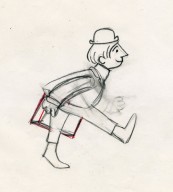
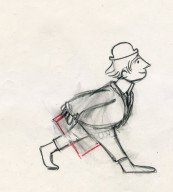
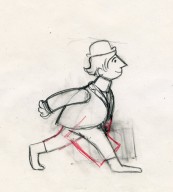
(Click any image to enlarge them.)
Animation Artifacts &Commentary 06 Oct 2006 09:56 am
Tinder
- Mark Mayerson has culled together some numbers for grosses of animated features released since 2001. I’m not sure it reveals anything, but it is diverting information.
- The ASIFA-Hollywood Animation Archive posts the 1941 Chinese animated feature, Uproar In Heaven. This movie file comes courtesy of Milt Knight. It’s certainly an oddity. Using a rotoscope technique, they’ve redrawn and stayed close to every frame of the live action as the characters, whether pigs, humans or monkeys. It looks like some of those Fleischer song cartoons or even some of the silent Koko films.
Posted just prior to this, on the site, is Uproar In Heaven, the 1961 Chinese feature. This film, Directed by Wan Laiming and animated by the Shanghai Animation Studio, is the second of three versions of the story. It’s an adaptation of the Monkey King epic saga, and, as a matter of fact, I originally saw it with the title, The Monkey King.
- It’s interesting that many of the early non-US films took more from Fleischer than they
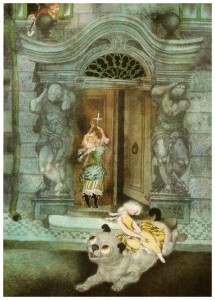 did from Disney.
did from Disney.
The early Japanese animated films look like the Fleischer films of the early 30′s. I saw a screening of a lot of these films back in the 70′s, and it caught me by surprise. Even the silent films they did look more like Koko than Felix.
I have a copy of the first Belgian animated feature, The Tinderbox. It looks as though they took the worst elements from Gulliver’s Travels, and tried to mimic that style. Lots of broad stretch and squash. All of the characters look like Gabby.
Perhaps, they weren’t able to imitate Disney since it took more knowledge of the craft, and other than Disney, no one would pay for that development.
Since I had no stills from any of the features, the image is a Jiri Trnka illustration for the Hans Christian Andersen story of The Tinderbox.
(Click to enlarge.)
